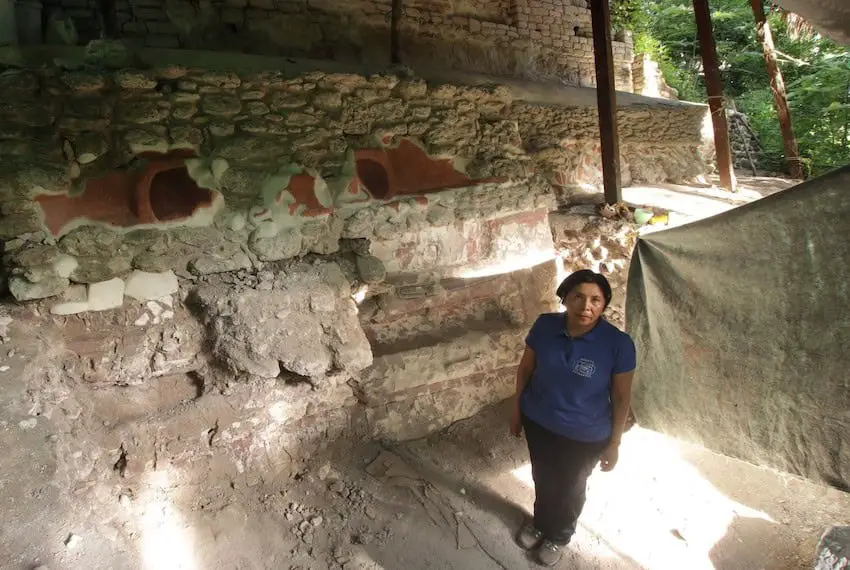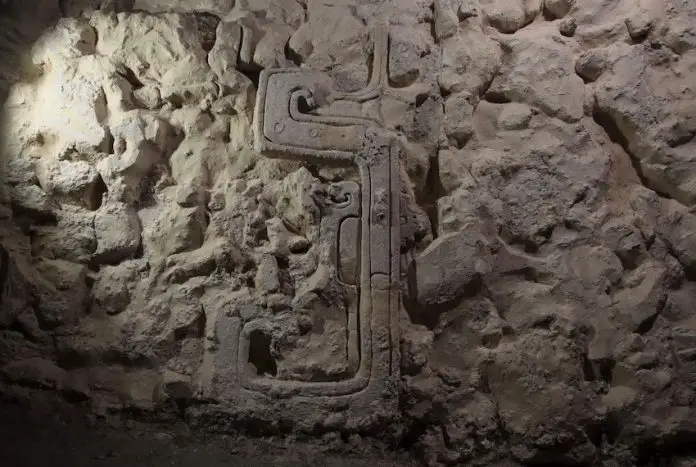Mexico’s archaeologists continue to uncover treasures in the lush forests of the Yucatán Peninsula.
In the Dzibanché Archaeological Zone in Quintana Roo, archaeologists have unearthed two platforms with stucco reliefs that reveal new details about the Kaanu’l dynasty, which ruled over the territories that today comprise Mexico, Belize and Guatemala.

In a statement, the National Institute of Anthropology and History (INAH) said the discovery offers “new insight” into the workings and worldviews of this powerful Maya dynasty, which ruled during the Early and Late Classic periods, between 250 and 650 AD.
What do the reliefs in Dzibanché represent?
Archaeologists believe their most recent findings date back to the Early Classic period (500-600 AD), coinciding with the rise of the Maya city of Dzibanché.
“This is a great finding for us,” archaeologist Sandra Balanzario Granados, head of the Archaeological Site Improvement Program (Promeza) in Dzibanché, said. “Although we had [found] stucco reliefs on larger buildings, we would never have thought of finding such decorated façades on a ball court with such profound meanings as these ones apparently have.”
The findings consist of two platforms located west of Ball Game II, a space where the city’s inhabitants would have played a ceremonial ball game. The stucco reliefs feature three scenes. The first depicts two guardians flanking a pedestal that, in pre-Columbian times, would have supported a sculpture. The glyphs on this pedestal reference a ruler of the Kaanu’l dynasty.

The second scene depicts figures that allude to ancestors who seem to inhabit the night sky, surrounded by stars and snakes. Epigrapher Alexander Tokovinine said these are elements characteristic of both Maya and Teotihuacán iconography.
Archaeologists think that the absence of a central sculpture on the relief suggests that it may have been removed by the city’s inhabitants centuries ago.
The third scene depicts a group of mythological animals associated with constellations.
“One feature shared by all three scenes is the representation of intertwined snakes, which indicates that we are looking at images with which the rulers of Dzibanché sought to reaffirm their ancestry or lineage,” the INAH said, adding that in pre-Columbian Maya societies, the hierarchs were seen as representatives of the gods on Earth.

The Kaanu’l dynasty eventually disintegrated and split into two groups — one remained in the Dzibanché settlement while the other settled in Calakmul, a city located in today’s state of Campeche.
Throughout the construction of the Maya Train, the INAH has unearthed a large number of artifacts and findings that show the region’s archeological wealth. Some of the institute’s most recent findings include a pre-Columbian cave in Tulum, an apparatus used for catching rainwater and an ancient temple dedicated to Kukulkán, among many others.
Mexico News Daily
